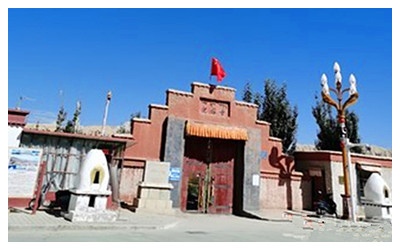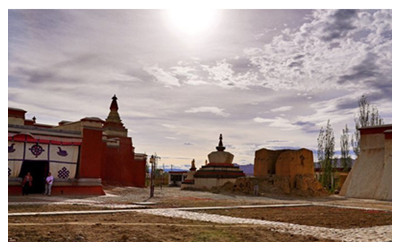Skype: neodalle-travel
Tel: +86 135 7447 2266
E-mail: sales@visitaroundchina.com
 Tholing Monastery was a famous Buddhist temple in Tibet built in the 11th Century by the prince of Guge Kingdom. In 1042, an Indian dignitary once gave sutra lectures here, greatly promoting the development of the Buddhism in Ngari. The monastery is also a witness of the renaissance of the area's Buddhism. Over one thousand deer antlers, pictographs and hieroglyphics collected in the temple are of great archeological value.
Tholing Monastery was a famous Buddhist temple in Tibet built in the 11th Century by the prince of Guge Kingdom. In 1042, an Indian dignitary once gave sutra lectures here, greatly promoting the development of the Buddhism in Ngari. The monastery is also a witness of the renaissance of the area's Buddhism. Over one thousand deer antlers, pictographs and hieroglyphics collected in the temple are of great archeological value.What to see?
 Jiasha Hall is the main building and serves as the symbol of Tholing Monastery. From above, it looks like the Chinese character ya '亚'. The central hall symbolizes the highest mountain in Buddhism - Mount Meru. The surrounding small halls represent the four continents while the pagodas in the four corners stand for the Heavenly Kings guarding the sutras. The statue of Tathagata Buddha is enshrined in the central hall, and the murals remaining in the other small halls are extremely beautiful. Their style and taste echo the artistry of the Ruins of Guge Kingdom.
Jiasha Hall is the main building and serves as the symbol of Tholing Monastery. From above, it looks like the Chinese character ya '亚'. The central hall symbolizes the highest mountain in Buddhism - Mount Meru. The surrounding small halls represent the four continents while the pagodas in the four corners stand for the Heavenly Kings guarding the sutras. The statue of Tathagata Buddha is enshrined in the central hall, and the murals remaining in the other small halls are extremely beautiful. Their style and taste echo the artistry of the Ruins of Guge Kingdom.
White Hall is where the statue of Sakyamuni stands. There used to be 14 other sculptures, however only their pedestals remain now. In the murals here, you can find pictures of the king, Atisha and other high lamas.
Red Hall was the assembly place for the monks. The most impressive remains here are also the murals which depict many stories. The mural of the Sixteen Vajra Dancers on the porticos is especially lovely.
The spot of 108 pagodas is the group of pagodas beside the Xiangquan River. They are all made of earth and arranged in an orderly line hundreds of meters long. There are 108 pagodas in all, hence the name '108 Pagodas'. At sunset the reflection of the sun's rays from the yellow pagodas makes for a beautiful and breathtaking scene.
Travel Tips
Add: in Ali (Ngari) Prefecture of the Tibet Autonomous Region
Entrance Fee: CNY 80
Opening Hours: 08:00 - 19:00
 Ask Questions ?
Ask Questions ?